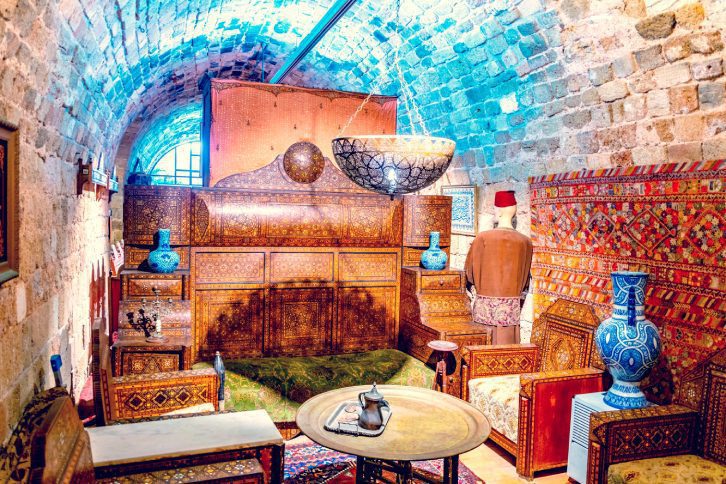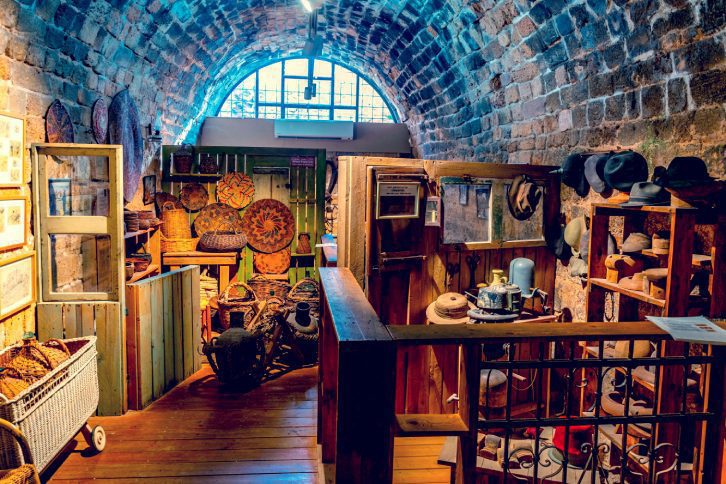Treasures in the Walls Museum is an Ethnographic and Folklore Museum of Acre and the Galilee Region. The museum is located inside the ancient walls of old Acre. In fact, the walls were initially built by the Ottoman ruler of the area, Ahmed Al Jazzar Pasha after Napoleon´s attempt to conquer the city in 1779. The commander´s tower “Burg´ Al Commander” is divided into arched halls which were used to hold the Ottomans garrison and now hold a beautiful and rare collection which gives an insight into the way of life in the Galilee during the 19th and the beginning of the 20th centuries.
More About Treasures in the Walls Museum in Acre
One wing of the museum simulates a 19th-century market, a market that offers a trip to Galilee a century ago. Various artisan shops are on display, such as a hatter with his original tools, a shoemaker, a blacksmith, a straw and wicker maker, enamel housewares, a potter, a tinsmith, a copper plumber, a woodcutter, a carpenter, a blacksmith, a pharmacy, a jeweler, sewing and embroidery – clothes and fabrics and a fixture The Primuses. The market shops combine original bars from the collection of Michael Lurie and authentic doors from the collection of Dan Hortman.
The second wing, dedicated to collectors and collections, features a Damascus living room inlaid with a samovar with a dedication to Ahmad al-Jazar, old cabinets including collections of lanterns, weights, sacred vessels of the three religions, Armenian vessels, locks and bells, old banknotes and a special collection Acre Pass – Letters and matches from the Nur factory since the days of the Mandate and rotating exhibitions by private collectors.
About the Structure of the Museum
The “Treasures in the Wall” museum is located in Burj al-Commander, in the northeast corner of the outer wall of Old Acre. The construction of the wall began during the time of Ahmad al-Jazar, the governor of Galilee under the name of the Ottoman Empire between 1775 and 1804, and its completion in the early 19th century by his successor Suleiman Pasha (1805–1818). On the wall, in the rounded courtyard, are eight platforms and gunfire openings for cannons. Soldiers, with their ammunition, lived in the arched rectangular structure, sunk inside the wall, and opened a passage between it and the position. Below the building, at the base of the wall, passes a tunnel, about 80 meters long and about 10 meters high, which was used for the passage of soldiers and it connects the inner moat to the outer moat.









